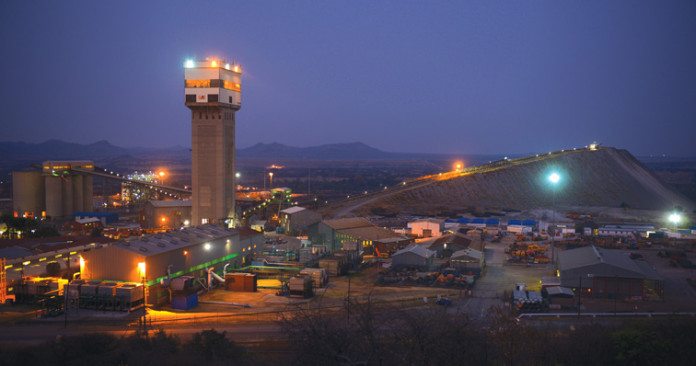
LONMIN negotiated the third quarter sans major production mishap, especially at its smelting facilities which it said were “running normally”.
As a result, Lonmin expected it would release previously locked-up metal inventory – important if the firm is to meet its production forecast of 650,000 to 680,000 platinum ounces for the 2018 financial year.
Lonmin was also tracking well in terms of its unit cost guidance for the year which is between R12,000 to R12,500 per platinum group metal ounce (PGM oz). In addition, the average rand basket was 13.1% higher at some R13,017/oz year-on-year in the third quarter while PGM sales were also higher, by roughly 2%, equal to 352,128 oz. Platinum sales were 2.3% lower for the year at 176,121 oz.
The upshot of the numbers is that Lonmin is keeping things tight as its edges towards the eventual merger with Sibanye-Stillwater. Net cash, as a result of the production performance, increased to $23m from $17m in the previous quarter, apparently defying some forecasts that it would have to turn to shareholders again to stay afloat.
Said Goldman Sachs of the increase in net cash: “This is a positive and has a positive readacross for Sibanye as Sibanye is in the process of acquiring Lonmin and the net cash position of Lonmin makes the balance sheet of Lonmin looks better”.
The Competition and Markets Authority of the UK unconditionally cleared the proposed acquisition transaction on 28 June “… which is on target to close in the second half of this year,” the company said. One ‘acid test’, however, will be the approval of Sibanye-Stillwater shareholders which is not a slam dunk were Lonmin to be leaking cash.
Sibanye-Stillwater has also commented that it might not ask its shareholders to vote on the transaction if Lonmin’s financial position was seriously deteriorated. Goldman Sachs said it did not take a view on whether the transaction would go through later this year.
For its part, Lonmin is shutting its older, so-called Generation One shafts: Hossy, E1, E2, 4B and W1 – a development that would see it release 12,600 employees in three years of which 2,700 employees are to be let go this year.
Lonmin’s liquidity would also be boosted by the previously announced sale for $14.75m of its 50% stake in Petrozim Line, deemed a non-core asset. The shares will be bought by the National Oil Infrastructure Company of Zimbabwe which will also pay an $8m special dividend to Lonmin- funds that would be used “… to improve the company’s liquidity”. The transaction, first announced in June, would close in the last quarter of this year.
Lonmin also said it was maintaining its revised capital expenditure guidance for the current year to between R1.2bn and R1.3bn.








